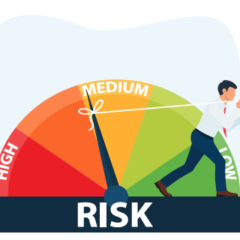Last updated on
Social Security Disability Benefits After a Blood Clot: Are You Eligible?
Deep vein thrombosis (DVT) occurs when a blood clot forms in a deep vein, most often in the legs. The effects of a DVT can linger long after a clot develops, leading to serious complications that leave you unable to work. But under certain circumstances, you may qualify for disability benefits from the Social Security Administration (SSA) after a blood clot.
Meeting the Medical Criteria for Benefits
How do you know if you can receive disability benefits? First, the SSA will evaluate how your blood clot has affected you and your physical abilities. Your medical record will be reviewed in detail, and Disability Determination Services will consider your functional limitations. Your records will then be used to complete a residual functional capacity (RFC), which will explain your limitations/restrictions. Your healthcare provider can also fill out an RFC to help you through the claims process.
It’s difficult to be approved for disability benefits based on DVT alone, but you may qualify for benefits if you have a related condition called chronic venous insufficiency (CVI). CVI develops when a blood clot damages the veins in the legs. CVI prohibits proper blood flow to your limbs and can result in difficulty walking, skin ulcers on the legs, and chronic pain. CVI is listed as a disabling condition in the SSA medical guide, which is called the Blue Book.
To meet the criteria for CVI (Listing 4.11), you must have a formal diagnosis of CVI and experience at least one of the following:
- Leg cramping, itching, or burning
- Recurring wounds that do not heal after 3+ months of treatment
- Brawny edema, which is severe swelling of the legs along with discoloration and thickening of tissues
You must be able to provide detailed medical records to document your history of DVT and CVI, the treatments you’ve received, and the ways that your condition impairs your ability to function.
If you don’t meet the criteria for benefits based on the Blue Book listing, but your RFC indicates that you’re unable to work, you might still qualify for disability using a medical vocational allowance. Under a medical vocational allowance, the SSA will look at your past work history, medical records, and RFC to establish if you’re able to perform any type of past work with your current condition. If it’s determined that you can’t perform this work, then you may still be approved for disability benefits—regardless of not meeting the Blue Book listing.
Starting the Application
You can begin your application online. If you’d prefer to complete your application in person, you can do so at an SSA office in your area. On initial review, most claims are denied due to a lack of medical evidence. Be prepared to submit as many supporting medical documents as you can.
Additional Resources:
https://www.ssa.gov/disability/professionals/bluebook/AdultListings.htm
https://www.ssa.gov/disability/professionals/bluebook/4.00-Cardiovascular-Adult.htm – 4_11
https://www.disabilitybenefitscenter.org/blog/acceptable-documents
https://www.disabilitybenefitscenter.org/state-social-security-disability



